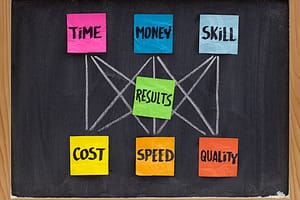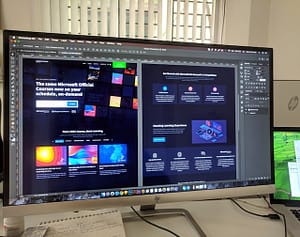Equipment breakdowns. Disruptions in production. Scrambling to find replacement parts. These are all nightmares for any facility manager. But what if you could prevent them? That’s the magic of effective maintenance management! It’s all about keeping your stuff in tip-top shape, saving you money on repairs, and making those machines last for years to come. Think of it as giving your equipment the TLC it deserves!
Here are some real-world tips to ditch the fire drills and turn your maintenance routine from a guessing game into a well-oiled machine:
Tip #1: Understand your assets
Not all equipment is created equal. Identify the machines that are critical to your day-to-day operations. These are the ones that, if they fail, will cause significant disruptions and production losses. Once you’ve figured out your A-team assets, use that knowledge to ID equipment and focus your resources on implementing a killer maintenance plan for them.
Tip #2: Develop a maintenance plan
Start by setting clear goals like cutting costs or reducing downtime. Next, prioritize tasks based on the criticality of the equipment. Develop a schedule that includes routine checks, preventive maintenance, and inspections. Ensure everyone on your team knows the plan and their responsibilities.
Tip #3: Embrace preventive maintenance
Think of preventive maintenance as giving your equipment regular checkups, just like you would visit the doctor. This way, you catch small problems early on before they turn into major headaches. Other benefits you can enjoy are as follows:
Reduces the risk of unexpected breakdowns
Regular maintenance catches small problems before they worsen, preventing equipment failures that can halt production and cost you money in repairs and lost output.
Boosts equipment performance
By keeping your equipment in top shape, you can optimize its functionality and ensure it’s operating at peak capacity. This translates to higher quality output, increased production efficiency, and potentially even reduced energy consumption. Also, taking steps to improve equipment efficiency can lead to more consistent performance and longer equipment lifespan.
Extends the lifespan of your assets
Proper maintenance slows down the natural wear and tear on your equipment, allowing it to function for a longer period. This saves you money in the long run by delaying the need for replacements.
Preventive maintenance isn’t just about fixing things; it’s about preventing problems in the first place. By taking a proactive approach, you can ensure your equipment is always in top condition and operating at its best.
Tip #4: Train your team
Your maintenance team needs to be well-trained. Provide ongoing training to keep them updated on best practices and new technologies. Ensure they understand how to use tools and equipment properly. A well-trained team can identify potential problems early and take the right steps to fix them. This not only improves maintenance management but also enhances safety.
Tip #5: Maintain a centralised knowledge base
Imagine a scenario where a technician needs to troubleshoot a problem but can’t find the relevant manuals or historical maintenance records. Frustrating, right? To avoid this and to streamline operations, establish a central repository for all your maintenance-related information.
This could be a physical filing system or, ideally, a computerized maintenance management system (CMMS). A CMMS allows you to store equipment manuals, maintenance schedules, work order history, and parts inventory – all in one easily accessible location.
Tip #6: Monitor performance

Zero Creatives GmbH / Avalon
Regularly monitor the performance of your maintenance activities. Track key performance indicators (KPIs) such as downtime, maintenance costs, and response times. Analyzing these metrics can help you identify areas for improvement. Use this information to adjust your maintenance plan and make more effective decisions.
Consider these additional aspects when monitoring performance:
Downtime analysis
Measure the frequency and duration of equipment failures to identify patterns and root causes.
Cost tracking
Monitor maintenance expenses, including labor, parts, and overheads, to find cost-saving opportunities.
Response times
Track how quickly issues are addressed to ensure timely repairs and minimize disruptions.
Work order completion
Keep an eye on the completion rate of scheduled maintenance tasks to ensure nothing falls through the cracks.
Effective performance monitoring provides a clear picture of your maintenance operations and helps you make data-driven decisions for continuous improvement.
Tip #7: Embrace technology
There’s a wealth of technology available to streamline and improve maintenance management. Consider implementing a CMMS, as mentioned earlier. These systems can automate tasks like scheduling work orders, tracking inventory, and generating reports. Additionally, explore mobile CMMS solutions that allow technicians to access work orders, update statuses, and record data in real time – all from a smartphone or tablet.
Tip #8: Foster communication
Ensure there’s a clear line of communication between your maintenance team, operators, and management. Use tools like maintenance management software to facilitate information sharing. Hold regular meetings to discuss issues, share updates, and plan upcoming tasks. Good communication helps prevent misunderstandings and keeps everyone on the same page.
Tip #9: Harness the power of data
Don’t just collect data – use it to your advantage! The information gathered through your maintenance activities is a goldmine of insights. Analyze work order history to identify recurring problems with specific equipment.
Use this data to refine your preventive maintenance plans and predict potential failures before they occur. By leveraging data analytics, you can make data-driven decisions that optimize your maintenance strategy and improve overall equipment effectiveness.
Tip #10: Conduct regular audits
Review your maintenance processes and identify areas for improvement. Ensure compliance with industry standards and regulations. Audits provide an opportunity to assess your performance and make necessary adjustments to enhance efficiency.
Tip #11: Continuously improve
Maintenance management is not a set-it-and-forget-it process. It’s an ongoing cycle of improvement. Regularly review your maintenance plans and procedures to ensure they’re still effective. Be open to adapting your strategy based on new information, emerging technologies, and changing production demands. By fostering a culture of continuous improvement, you can ensure your maintenance program remains optimized and delivers long-term value.
Conclusion
By following these tips, you can transform your maintenance management from a reactive scramble to a proactive strategy that keeps your equipment running smoothly, minimizes downtime, and extends the lifespan of your assets. The result? Improved operational efficiency, increased productivity, and significant cost savings.






Leave a Comment